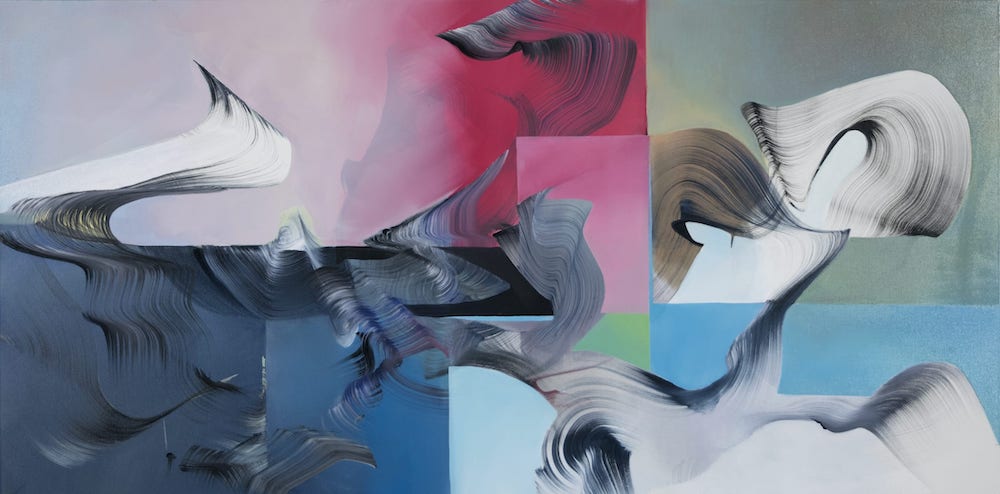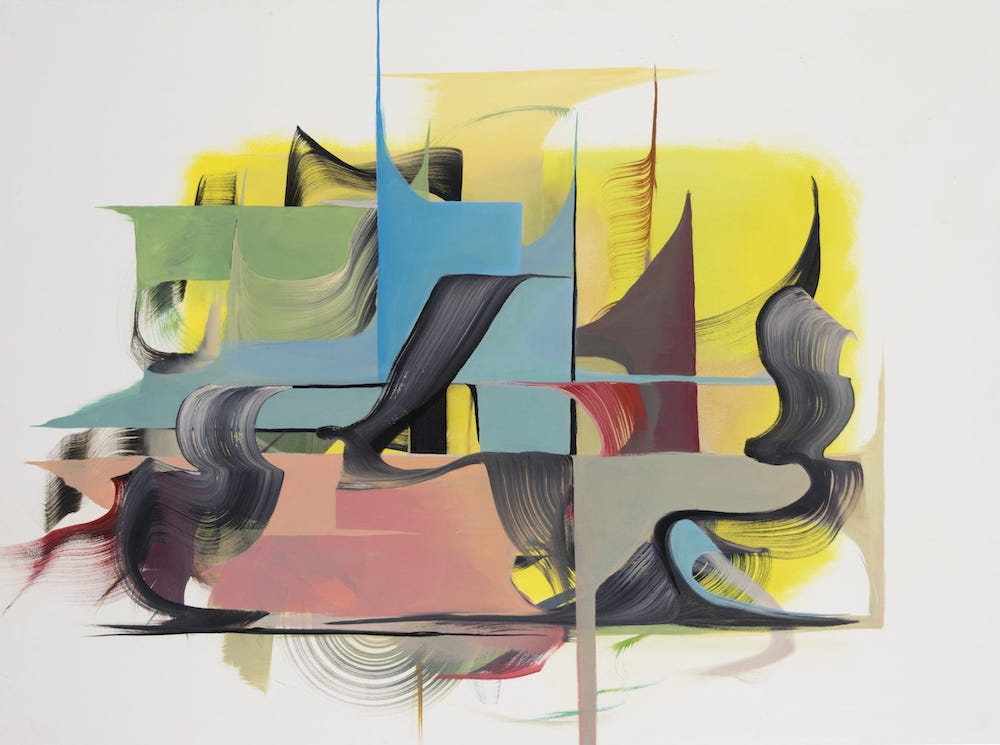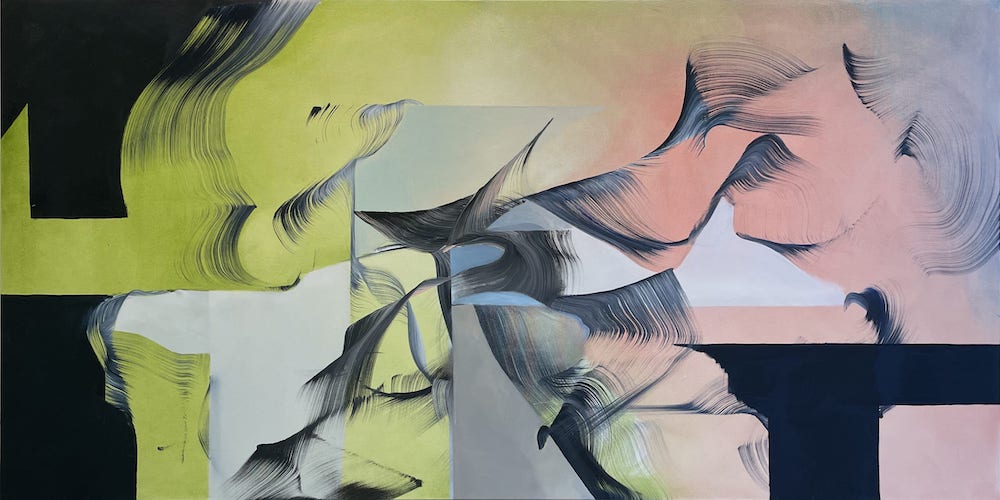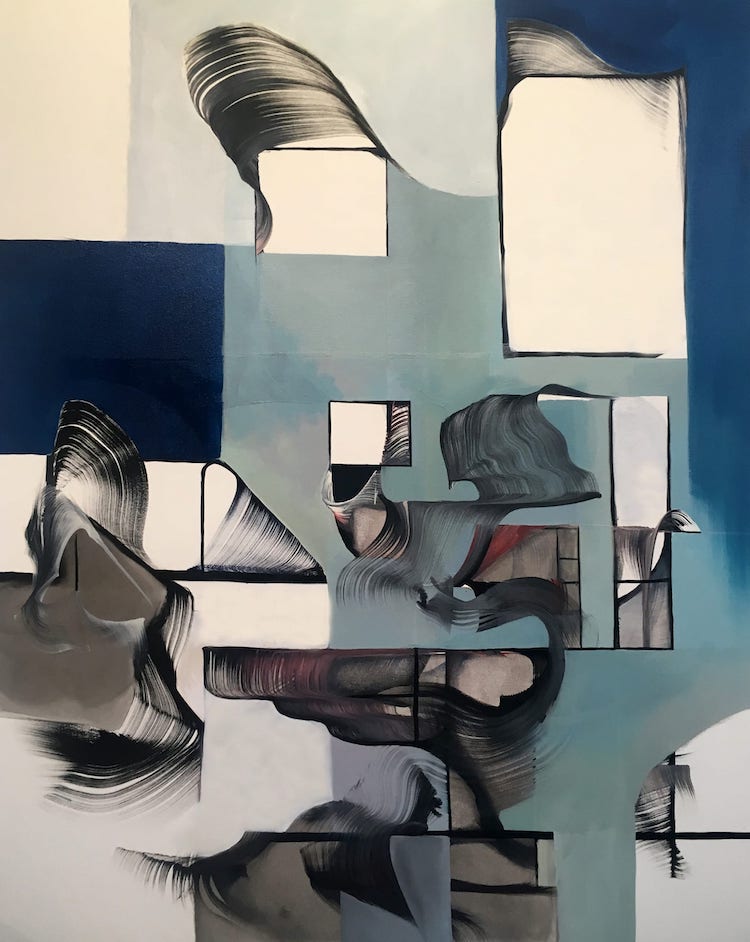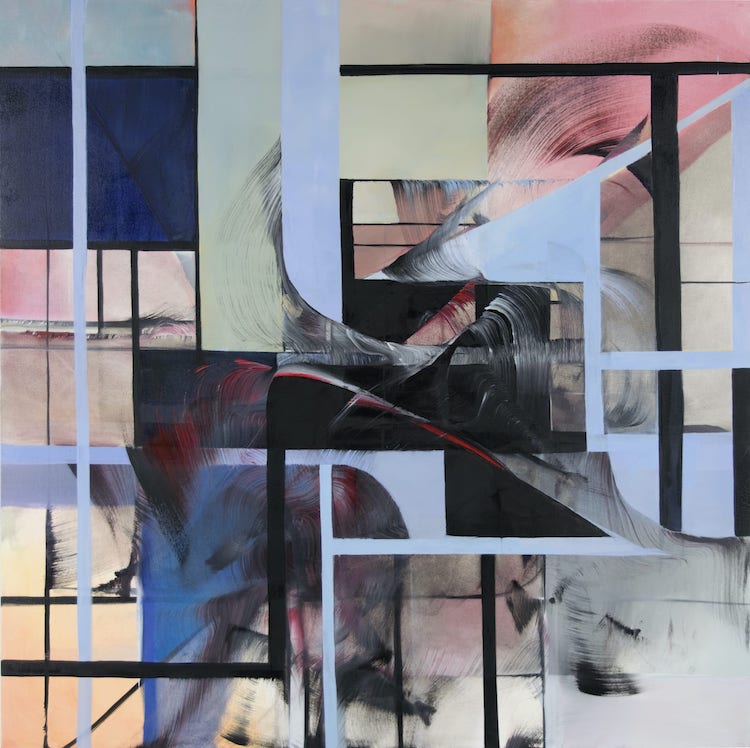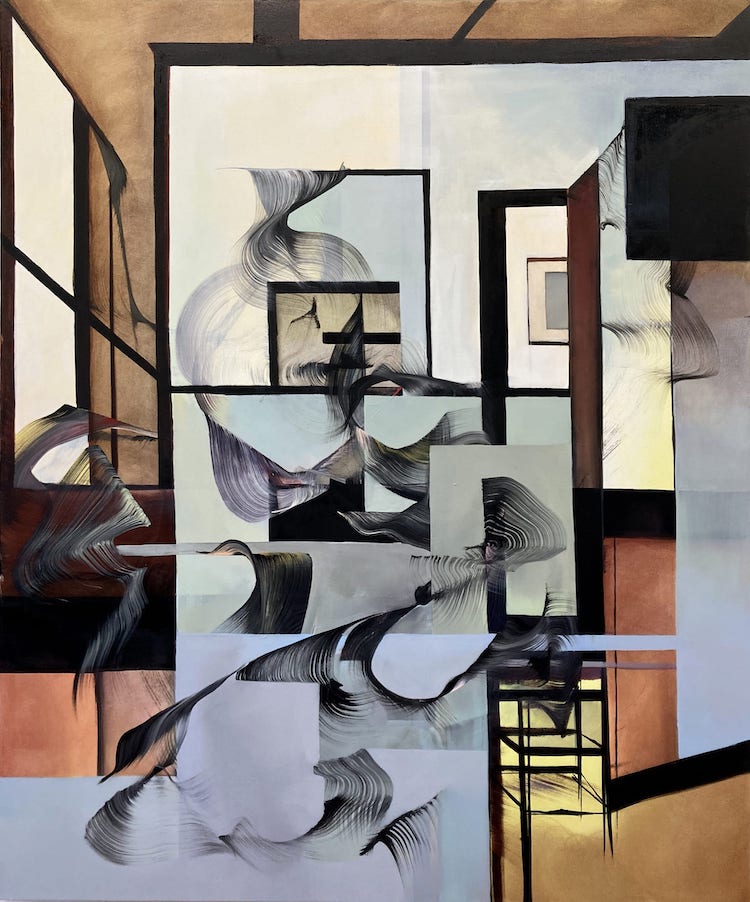Laina Terpstra exhibits seven large paintings ranging from 72 x 60 inches to 36 x 48 inches, along with work by sculptor Paul Bloch, at Maybaum Gallery in San Francisco, through January 15. The paintings are united through Terpstra’s loose language of abstraction, but differ in gesture and color. Drawing from the old masters of the Dutch still life tradition, Terpstra uses the strictures of their hyper-composed style as a kind of scaffolding from which to work. She reimagines the placement of figures within the plane of the painting, as though they were navigating within it. The source paintings lend themself to this, given the often mid-gestural depiction of various actors in a drama.
This is particularly evident when one views the source image for “Variation from Pieter DeHooch, Woman Drinking with Soldiers.” Spatial relations aside, there is a color relationship and angular perspective line that survives the reinterpretation. Knowledge of the source imagery, however, isn’t necessary to feel the depth contained in the final composition. One senses from the gestural brush work that Terpstra’s undertaking is a visceral physical process, which capitalizes on the environmental happenings of the moment. Her paintings ultimately diverge towards their own complete and unique stories as a result of the collision of her source imagery and the stimuli she encounters in the studio.

Terpstra, who danced as a young girl at ODC in San Francisco, and later while attending Sarah Lawrence College, relies on body movement to describe her process. Kinesthetic focus and perception is critical to these paintings. Just as a dancer is aware of the parts of their body via sensory organs in their muscles, Terpstra creates both the architectural support or “body” of the painting and then channels the loose gestures that give the overall form its vitality. She follows this visual choreography through the image as she utilizes perspective to create the space and volume necessary to accommodate her body’s signaling. It is this depth of field and the carefully choreographed scenes depicted that also link them to the Dutch masters.
Although her finished canvas don’t easily suggest figures, her effectiveness at recasting source imagery implicitly allows a viewer to ponder that they are viewing an abstraction, rather than non-objective painting. The often mysterious narrative suggested, assists in keeping the eye from getting trapped in one area of the composition; and it lends the finished canvases an unresolved quality, which in turn allows the viewer to come back repeatedly for a different experience. The paintings are constantly fresh as a result.
There is a palpable tension in the paintings between the architectural elements—visible in the support and harder edge aspects of the renderings—and the movement that is placed within and without those constructed elements. As a result, the loose gestural brushwork exists above and below, both under and on top of, geometric lines. That these elements are struggling against one another doesn’t mean they are at odds.
The different planes of space allow the viewer to see into the paintings, as if they could reach through them with an arm. This is a common attribute of Dutch realism, which emphasizes perspective and depth. Terpstra achieves this effect, in part, because she uses blurred and uneven lines in her transitions, rather than hard edges; this creates a more transitory and temporary movement from one color to another, as well as allowing one type of painting mark to coexist with others.
The paintings are not dissimilar to the fundamental objective of modern dance. They lack rigidity and convey exploration and openness. The fluid movements, which represent organic and authentic emotions are, in effect, being dropped into the compositional planes. The paintings don’t have the coldness of scientific inquiry, but they do convey mathematical elements of preciseness competing with chance.
The calligraphic-style brush strokes are minimal; sometimes a single gesture holds a part of the painting, yet Terpstra is able to obtain volume from them. These paintings are not thickly painted, yet convey a sense of multiple passes and careful planning. Even if completed within simple movements, they communicate intentionality; multiple engagements certainly do not lessen their spontaneity and capacity to surprise and delight the viewer.
Five Carrara marble sculptures by Paul Bloch, projecting a sense of self-containment, add a compelling dialogue with the paintings. The stones’ softened edges extrapolate toward an intertwined composition reminiscent of an embrace. They connote organic and natural sensations, culminating in a puzzle-like variability, suggesting continuation and even, a poignant sense of endlessness. —Matt Gonzalez



